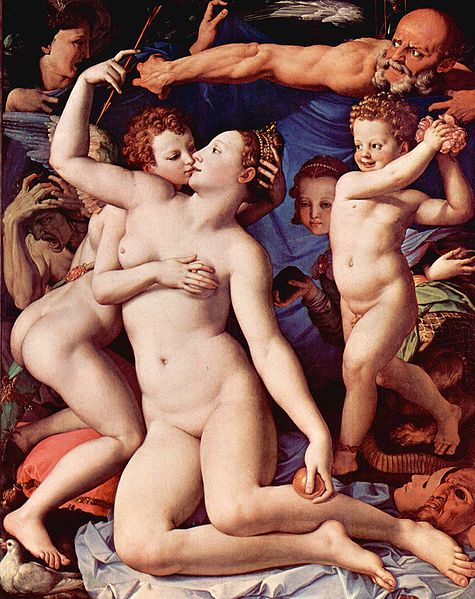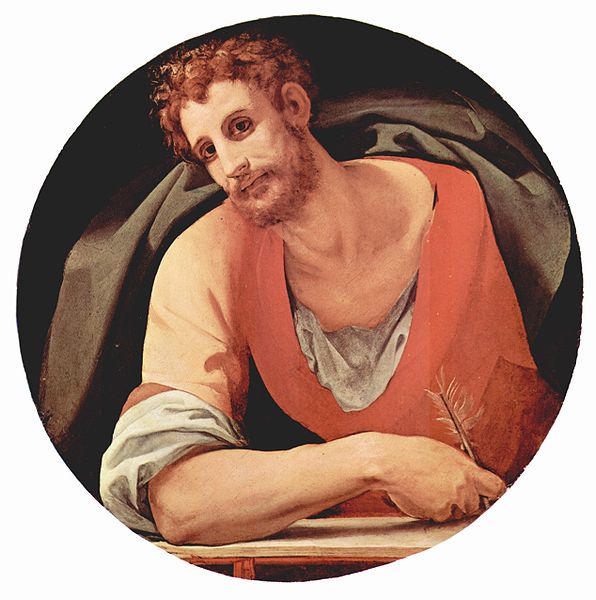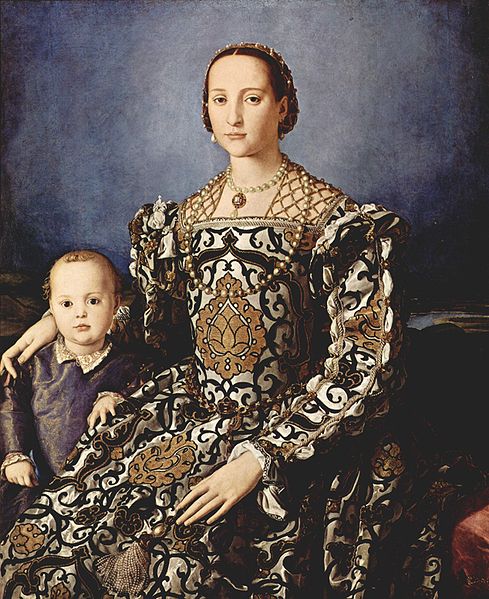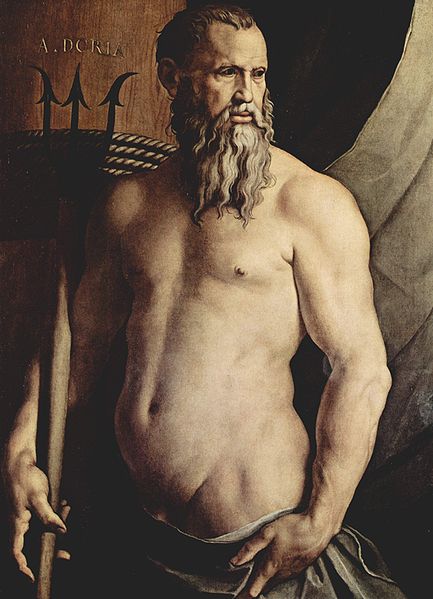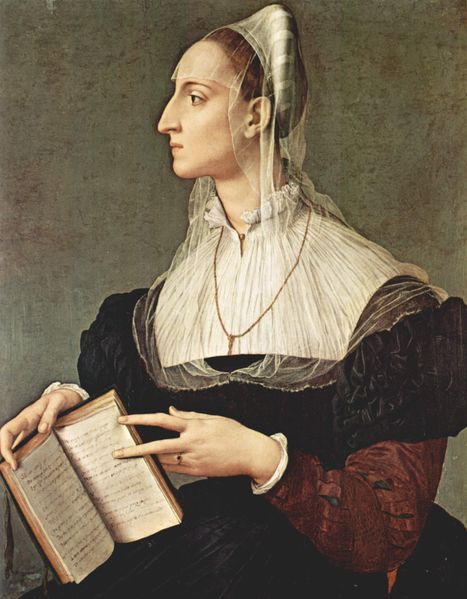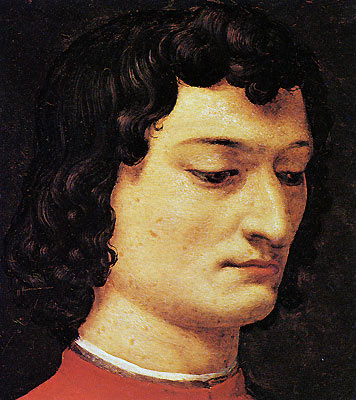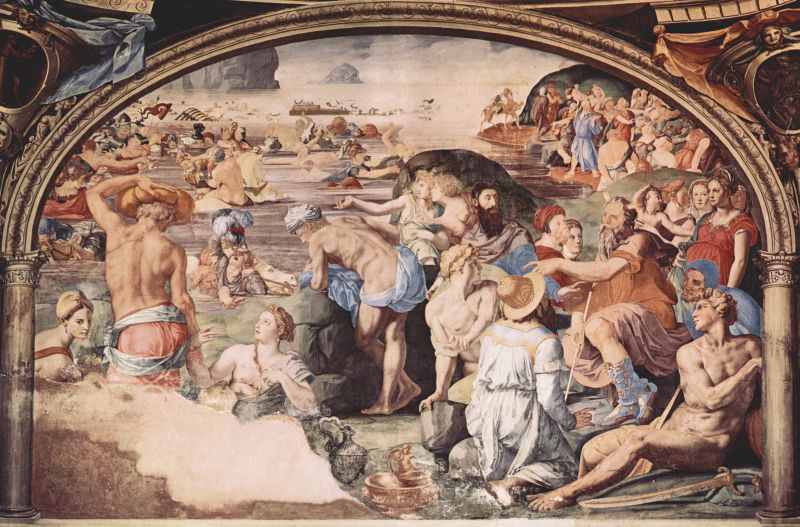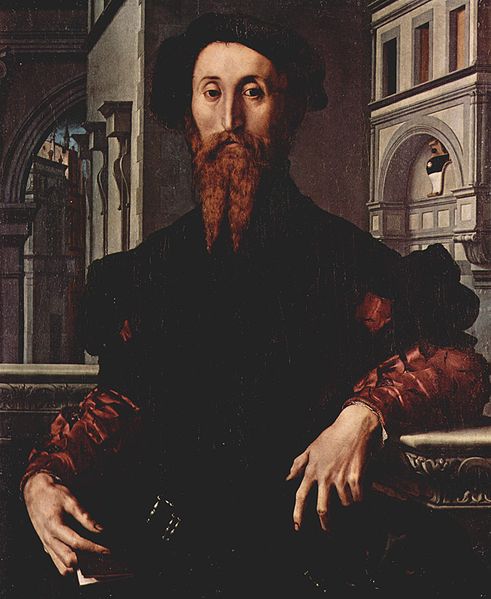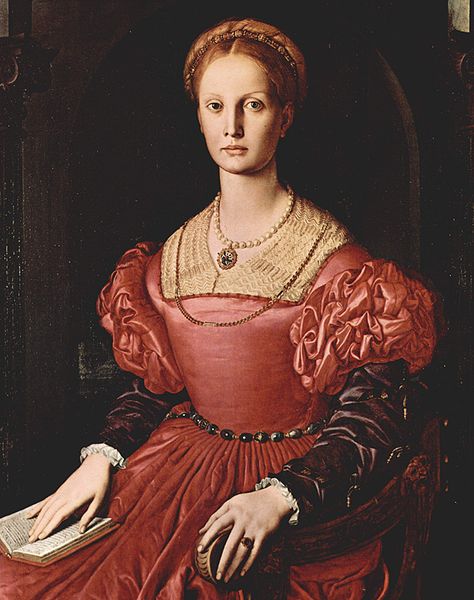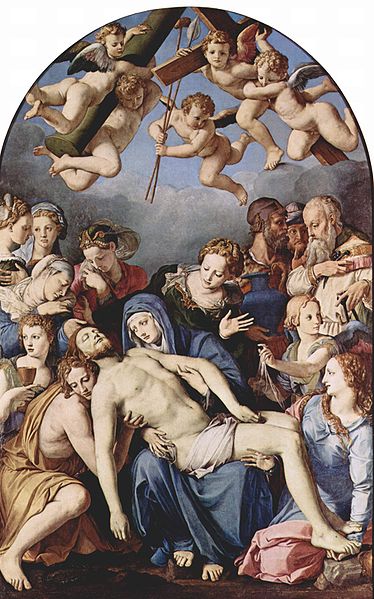<Back to Index>
- Mathematician August Ferdinand Möbius, 1790
- Painter Agnolo di Cosimo (Il Bronzino), 1503
- King of France and of Navarre Louis XVIII, 1755
PAGE SPONSOR
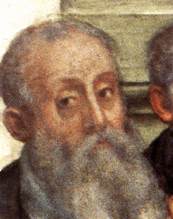
Agnolo di Cosimo (November 17, 1503 – November 23, 1572), usually known as Il Bronzino, or Agnolo Bronzino (mistaken attempts also have been made in the past to assert his name was Agnolo Tori and even Angelo (Agnolo) Allori), was an Italian Mannerist painter from Florence. The origin of his nickname, Bronzino, is unknown, but could derive from his dark complexion, or from that he gave many of his portrait subjects.
Bronzino was born in Florence around 1503. According to his contemporary Vasari, Bronzino was a pupil first of Raffaellino del Garbo, and then of Pontormo. The latter was ultimately the primary influence on Bronzino's developing style and the young artist remained devoted to his eccentric teacher. Indeed, Pontormo is thought to have introduced a portrait of Bronzino as a child into one of his series on Joseph in Egypt now in the National Gallery, London. Bronzino's early indebtedness to Pontormo's instruction can be seen in the arresting little Capponi Chapel in Santa Felicita, Florence. During the mid 1520s, the two artists worked together on this commission, though Bronzino is believed to have mostly served as an assistant to his teacher on the masterly Annunciation and The Deposition from the Cross frescoes that adorn the main walls of the chapel. The four tondi that contain images of the evangelists above are more of a mystery: Vasari wrote that Bronzino painted two of them, but his style is so similar to Pontormo's that scholars still debate the specific attributions.
Towards the end of his life, Bronzino took a prominent part in the activities of the Florentine Accademia delle Arti del Disegno, of which he was a founding member in 1563.
The painter Alessandro Allori was
his favourite pupil, and Bronzino was living in the Allori family house
at the time of his death in Florence in 1572 (Alessandro was also the
father of Cristofano Allori). Bronzino spent the majority of his career in Florence. Bronzino
first received Medici patronage in 1539, when he was one of the many
artists chosen to execute the elaborate decorations for the wedding of Cosimo I de' Medici to Eleonora di Toledo, daughter of the Viceroy of Naples.
It was not long before he became, and remained for most of his career,
the official court painter of the Duke and his court. His portrait
figures — often read as static, elegant, and stylish exemplars of
unemotional haughtiness and assurance — influenced the course of European court portraiture for a century. These well known paintings exist in many
workshop versions and copies. In addition to images of the Florentine
elite, Bronzino also painted idealized portraits of the poets Dante (c. 1530, now in Washington, DC) and Petrarch. Bronzino's best known works comprise the aforementioned series of the duke and duchess, Cosimo and Eleonora, and figures of their court such as Bartolomeo Panciatichi and his wife Lucrezia.
These paintings, especially those of the duchess, are known for their
minute attention to the detail of her costume, which almost takes on a
personality of its own. The Duchess is
pictured with her second son Giovanni, (who died of malaria in 1562,
along with his mother); however it is the sumptuous fabric of the dress
that takes up more space on the canvas than either of the sitters.
Indeed, the dress itself has been the object of some scholarly debate.
The elaborate gown has been rumored to be so beloved by the duchess
that she was ultimately buried in it; when this myth was debunked,
others suggested that perhaps the garment never existed at all and
Bronzino invented the entire thing, perhaps working only from a fabric
swatch. In any case, this picture was reproduced over and over by
Bronzino and his shop, becoming one of the most iconic images of the
duchess. Bronzino's so-called 'allegorical portraits,' such as that of a Genoese admiral, Andrea Doria as Neptune,
is less typical but possibly even more fascinating due to the
peculiarity of placing a publicly recognized personality in the nude as
a mythical figure. Finally,
in addition to being a painter, Bronzino was also a poet, and his most
personal portraits are perhaps those of other literary figures such as
that of his friend Laura Battiferri, wife of sculptor/architect Bartolommeo Ammanati. In 1540/41, Bronzino began work on the fresco decoration of the Chapel of Eleanora di Toledo in the Palazzo Vecchio. Elegant and classicizing, these religious works are excellent
illustrations of the mid-16th-century aesthetics of the Florentine
court, traditionally interpreted as highly-stylized and non-personal or
emotive. The Crossing the Red Sea is
typical of Bronzino's approach at this time, though it should not be
claimed that Bronzino or the court was lacking in religious fervor on
the basis of the preferred court fashion. Indeed, the duchess Eleanora was a generous patron to the recently founded Jesuit order. Bronzino's work tends to include sophisticated references to earlier painters, as in The Martyrdom of St. Lawrence (1569), in which almost every one of the extraordinarily contorted poses can be traced back to Raphael or to Michelangelo, who Bronzino idolized. Bronzino's skill with the nude was even more enigmatically deployed in the celebrated Venus, Cupid, Folly and Time, which conveys strong feelings of eroticism under the pretext of a moralizing allegory. His other major works include the design of a series of tapestries on The Story of Joseph, for the Palazzo Vecchio. Many of Bronzino's works are still in Florence but other examples can be found in the National Gallery, London, and elsewhere.
